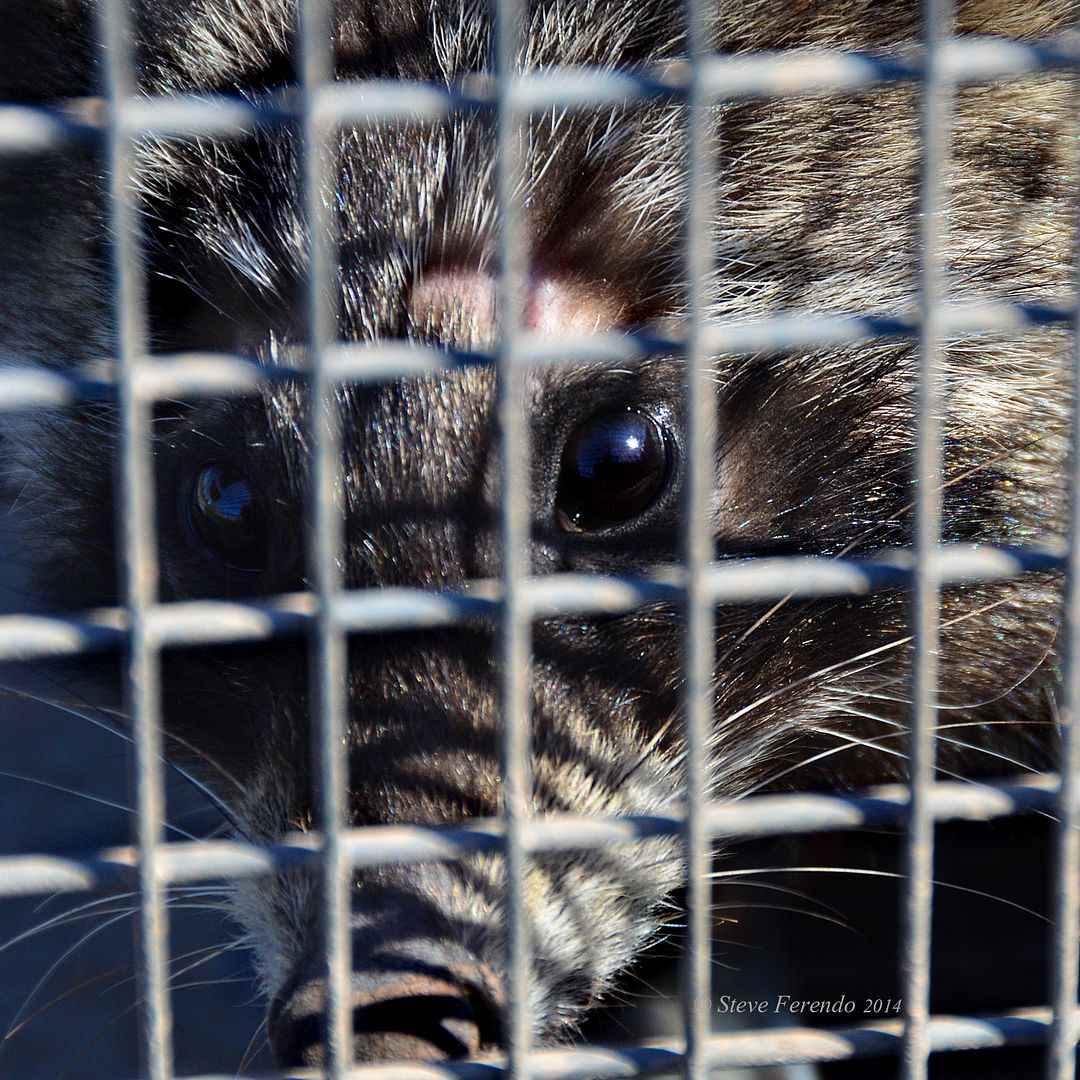Fortunately for the raccoon, his captor was not vindictive and it was released several miles away, completely unharmed...
Here are some interesting facts about these animals gleaned from the National Geographic website:
In the natural world, raccoons snare a lot of their meals in the water. These nocturnal foragers use lightning-quick paws to grab crayfish, frogs, and other aquatic creatures. On land, they pluck mice and insects from their hiding places and raid nests for tasty eggs.
Raccoons also eat fruit and plants—including those grown in human gardens and farms. They will even open garbage cans to dine on the contents.
These ring-tailed animals are equally opportunistic when it comes to choosing a denning site. They may inhabit a tree hole, fallen log, or a house's attic. Females have one to seven cubs in early summer. The young raccoons often spend the first two months or so of their lives high in a tree hole. Later, mother and children move to the ground when the cubs begin to explore on their own.
Raccoons in the northern parts of their range gorge themselves in spring and summer to store up body fat. They then spend much of the winter asleep in a den. There are six other species of raccoons, in addition to the familiar northern (North American) raccoon. Most other species live on tropical islands."
When I was a youngster, growing up in the hills of Appalachia, hunting raccoons was a popular sport, and many people kept specially trained dogs just for that purpose. Raccoons were valued for their fur and many folks, including my family, enjoyed them as table fare.
Because they are normally nocturnal most people don't realize that raccoons are common in their neighborhoods. If something has been getting into your trash, it could easily be a raccoon.



We dont have them here....great Pictures!
ReplyDelete